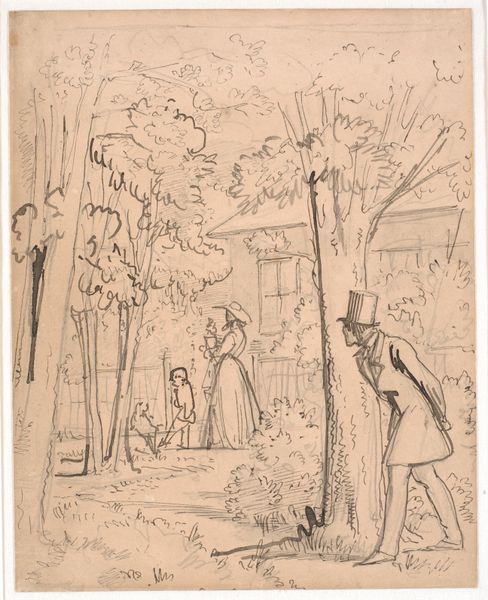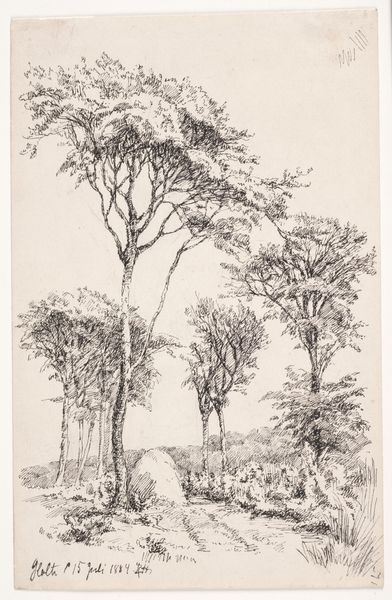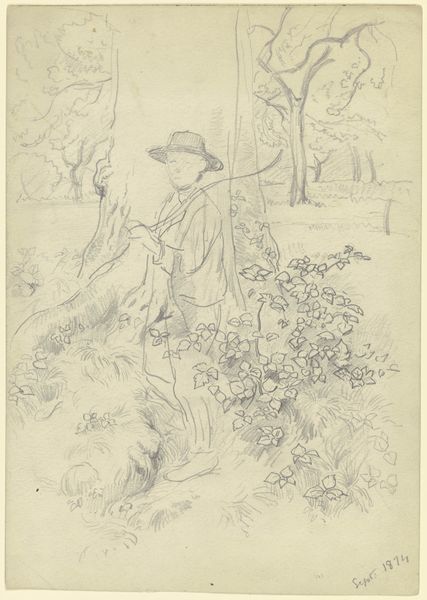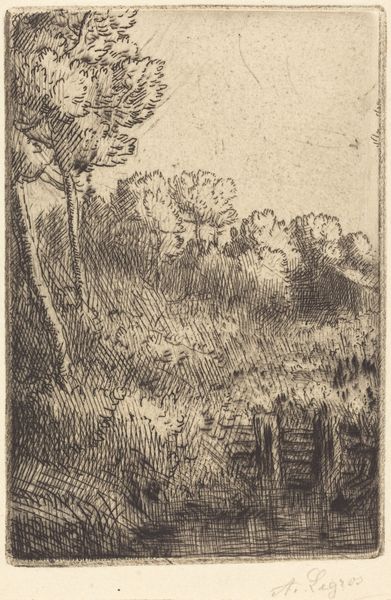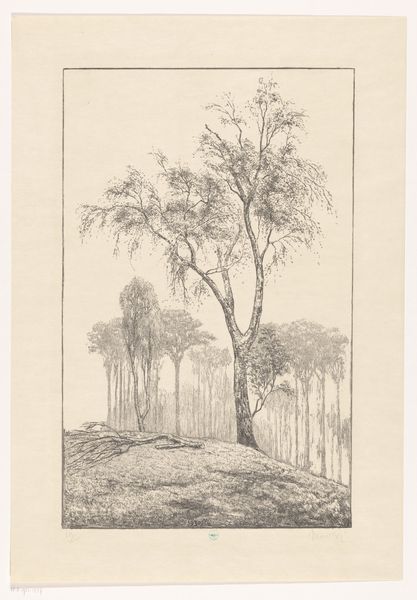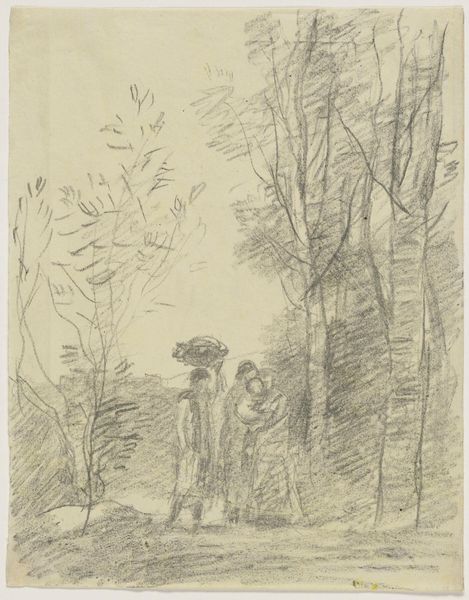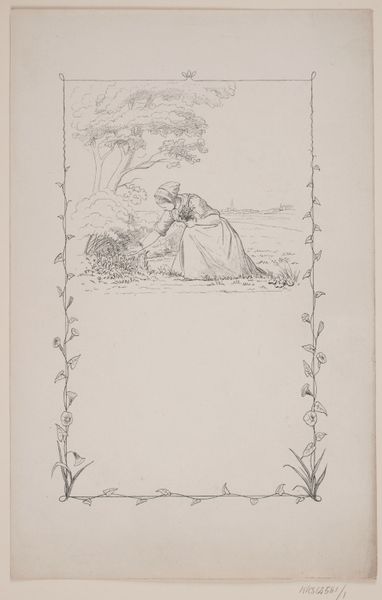
Copyright: Public Domain
Curator: Ah, what a wonderfully whimsical landscape. The frottage technique gives it such a delicate, almost dreamlike quality. Editor: It's... busy. And the textures achieved with ink and frottage feel somewhat at odds with the depicted stroll through nature. I keep focusing on the labor behind rendering all those plants. Curator: But isn't that precisely the charm? This drawing, "Emil Lugo on a Stroll," crafted in 1893, invites us to contemplate the tension between meticulous artistry and nature's own boundless exuberance. I can almost smell the earth and leaves. Editor: And I can almost see Lugo’s hand at work on this very drawing! Did you say it’s in ink and frottage? I’m interested in how the surface impacted Lugo’s creative process here—rubbing, scratching—the physicality. Curator: Marie Jensen made such expressive use of the combination—it's displayed currently at the Städel Museum. The layering creates a tangible depth, like a secret garden urging you forward. I imagine the rustling of leaves and maybe even a buzzing insect or two. Editor: Right. It’s plein-air meets drawing room perhaps? He captured something in the application and density of those marks... Maybe it’s more subversive than dreamy, thinking about what he decided to capture out in nature— and, frankly, leave out. Curator: Subversive? Well, perhaps a little rebellion against the conventional landscape then. Maybe Lugo’s saying, "Nature isn't just serene vistas; it's also the wild profusion underfoot!” Don’t you feel as if you could just dive right into the thicket of this drawing? Editor: I think I prefer the museum bench. Still, Lugo seems conscious of his decisions— which parts to emphasize, which to subdue, what textures to create through his medium. Curator: I agree; that combination is potent here. I will certainly contemplate labor's place in idyllic impressions during my stroll through nature later this evening. Editor: I’m going to go look for something that was mass-produced in 1893 and consider the wider implications of labor. It gives me something to think about!
Comments
No comments
Be the first to comment and join the conversation on the ultimate creative platform.
